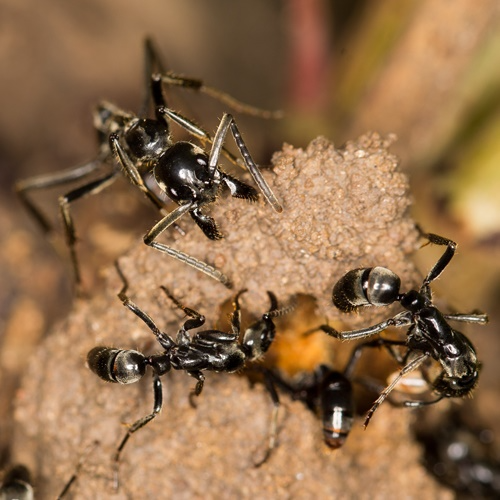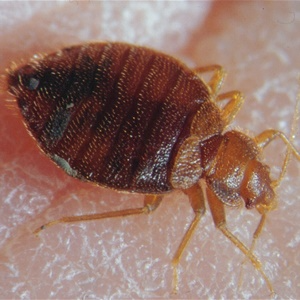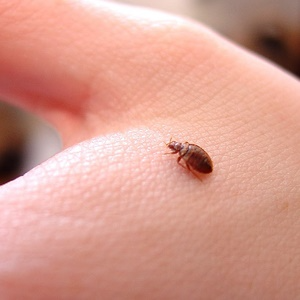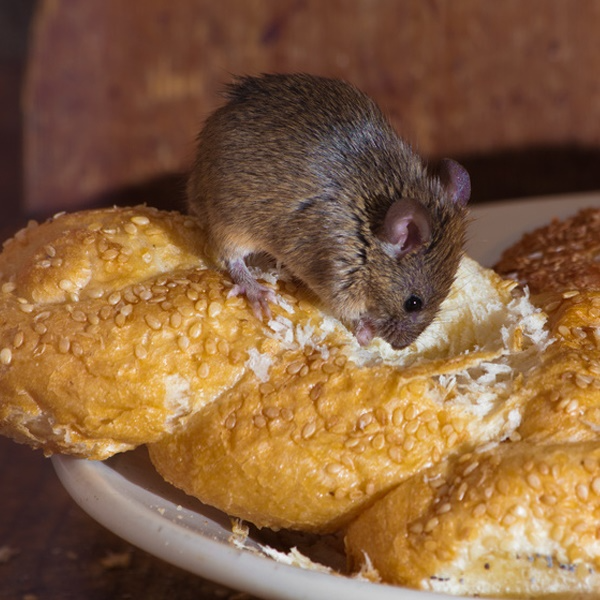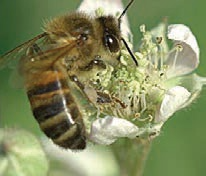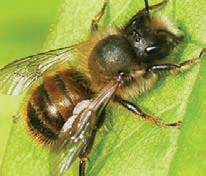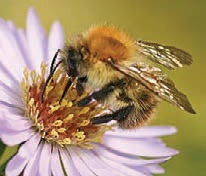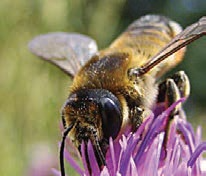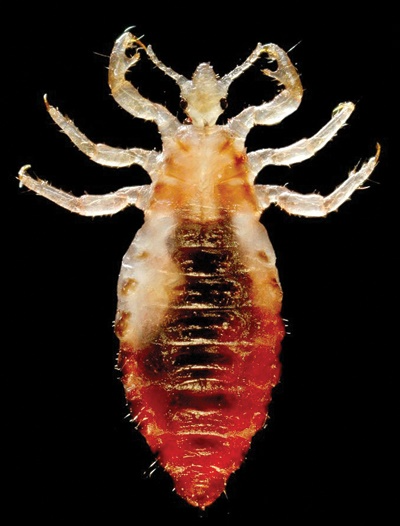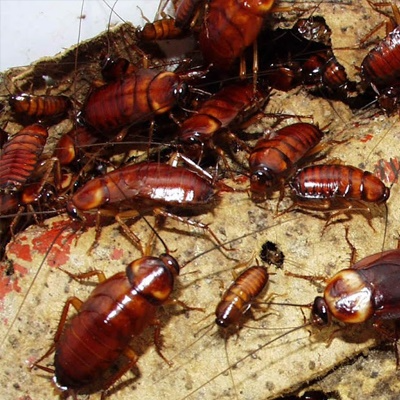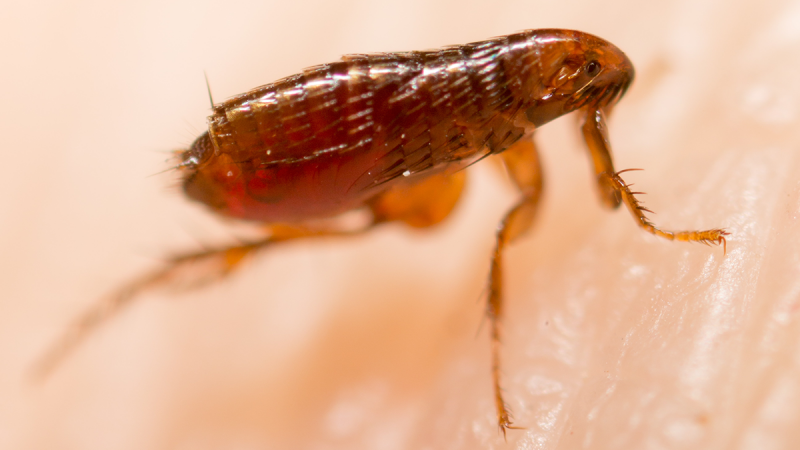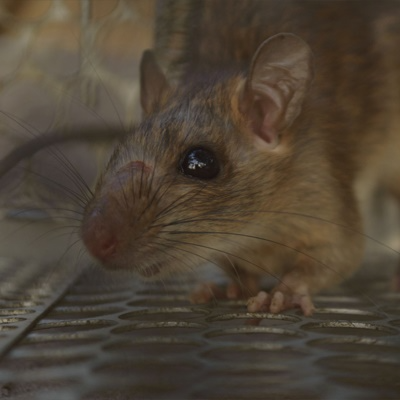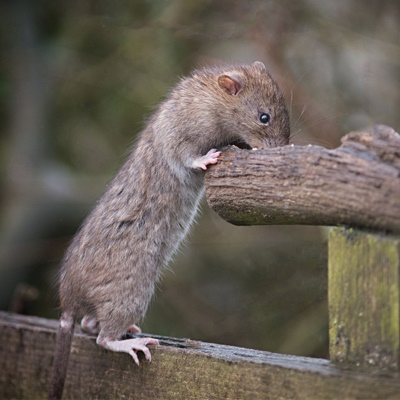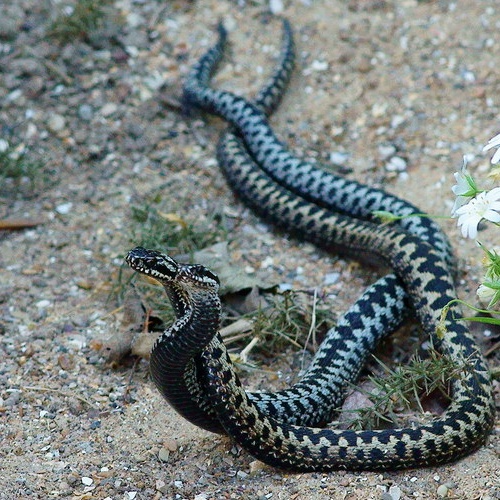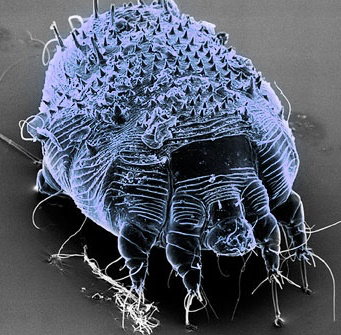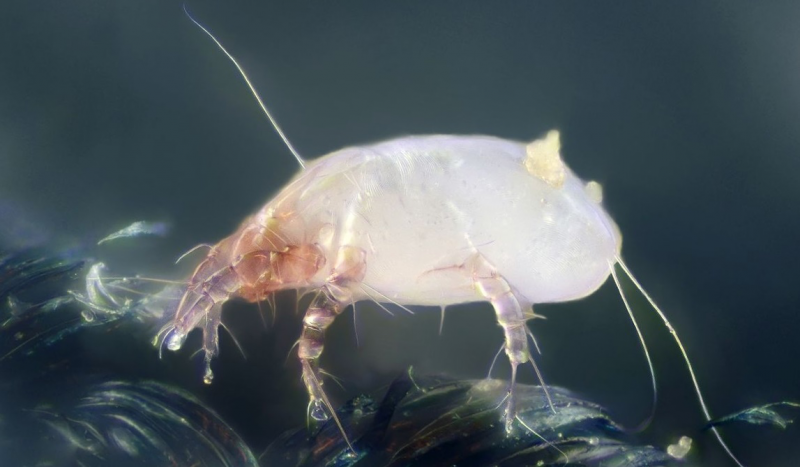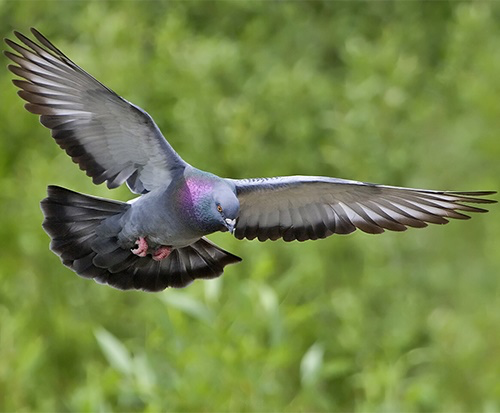Pest Management is defined as “a planned program, incorporating continuous monitoring, education, record-keeping, and communication to prevent pests and disease vectors from causing unacceptable damage to operations, people, property, materiel, or the environment. Pest control Management services uses targeted, sustainable (effective, economical, environmentally sound) methods including habitat modification, biological control, genetic control, cultural control, mechanical control, physical control, regulatory control, and where necessary, the judicious use of least-hazardous pesticides.”. Under this rules Landscape M&S ltd offers pest control services in all of his clients .
Ants
The commonest species that invades houses is the Black Garden Ant, which is actually very dark brown. All ants have the main divisions of the body (head, thorax, abdomen) distinctly separated by very narrow waists and have a sharp elbow joint in their antennae. They are highly organized social insects. It is the foraging worker ants that invade buildings in search of food. These are from 3 to 5mm in length and are attracted to sweet foodstuffs which they take back to the nest to feed to the larvae and queen.
Bed Bugs
This common pest once associated with unhygienic surroundings is prevalent due to a number of reasons, including increased travel, the use of second-hand furniture, and suspected tolerance to some pesticides. These bugs still occur with regularity, particularly in multi-occupancy buildings with rapid resident turnover, for example, hostels, hotels, holiday camps and blocks of flats
Appearance Adult Bed bugs resemble a small brown disc, measuring up to 6mm in length. It is wingless but the legs are well developed and it can crawl up most vertical surfaces. Their elongated eggs are cemented in cracks or crevices close to the hosts (which for Bed bugs are humans). The early stages of the Bed bug (nymphs) are tiny making them hard to detect with the naked eye.
Characteristics Bed bugs can usually be introduced to your property as they attach to luggage, bags, and clothing. Bed bugs may also be introduced through second-hand beds, furniture, and possessions.
Bed bugs can also travel from one room to another in search of food, or, after mating. Sometimes this may be a neighbouring property which then can create new infestations throughout multi-occupied premises.
Habitat Mainly active at night Bed bugs hide in crevices in the bed, surrounding furniture, and also behind skirting boards, under loose wallpaper, behind pictures and even in plug sockets to name a few.
Diet Bed bugs need to feed on the blood of a human host. However, in some cases, they can survive up to a year without feeding.
Why control Bed bugs Bed bug bites cause red, irritating marks/ lumps. Not everyone reacts to the bites, however, some people develop a more severe skin reaction and can experience disturbed sleep .Bed bugs are
not known to spread diseases. However, they can cause irritation and distress. Bed bugs can also ruin an organisation’s reputation. If clients and customers experience a Bed bug infestation in the premises you manage, they are likely to complain and request a refund, report on your company negatively and be unlikely to want to do business with you again
How to prevent Bed bugs It’s impossible to prevent a Bed bug infestation as they are generally spread through bad luck. However there are some things you can do to reduce your chances of getting an infestation: Before staying or moving into accommodation, make sure you check for signs of Bed bugs.Avoid taking any second-hand bedroom furniture without checking it thoroughly. If you have stayed in an infested room, upon arriving home, immediately check your luggage and clothing for bugs. If you find Bed bugs, to remove the bugs and eggs your luggage, clothing and bedding there are a few things you can do. Either; wash everything at a ‘hot’ (60°C) temperature setting; tumbled dry at a ‘hot setting for at least 30 minutes; dry clean everything; or place everything into a bag and then in the deep freezer for at least 3 days.For some businesses such as hotels, a proactive monitoring regime by a professional pest control organization can help detect
early signs. Also, training your staff in what to look for when they are cleaning and working within the rooms will mean you can detect a problem before a guest does, thereby protecting your reputations.
Signs of an infestation Red irritating bites, typically in rows on your neck, shoulders, back, legs or arms. Clusters or dark spots (about 1mm wide) that look like an ink dot are usually found on the bed frame or on the bottom side of the mattress. Small blood smears on the bed linen or headboard. Finding the small brown insects in and around your bed frame and sleeping area.
Rats
Appearance the Brown Rat is the larger of the two, often weighing over half a kilo and measuring about 23cm, without counting the tail. The Black Rat weighs half as much and is shorter. It has a pointed muzzle, large, almost hairless ears, a slenderer body, and a long thin tail that is longer than its body. 12.5.The House Mouse is found in buildings as they seek the warmth and shelter for nesting sites and food. The House Mouse body length ranges between 60-90mm, and the tail can add 100mm. They weigh less than 25g, and their four color varies between light brown and grey.
Characteristics House Mice have an acute sense of hearing, frequently using ultrasound to communicate, and is especially sensitive to any sudden noise. Their presence is usually detected from their dark-colored droppings or damage to stored foods in the larder, packaging or woodwork.
Habitat House Mice live in nests that they build out of cloth, wool and paper. Nests are often built inside houses, in places such as roof spaces, under floors or in wall cavities, and wherever there is access to a good source of food, especially during the winter. House Mice can squeeze through cracks as small as 5mm, but mouse holes are typically 20-30mm in diameter. House Mice are mainly active at night and can often be heard running about as they search for food.
Diet Mice are erratic, sporadic feeders, nibbling at many sources of food rather than taking repeated meals from any one item. They do not need free water to drink as they generally obtain sufficient moisture from their diet. Their favourite foods are cereal products, although they will eat almost anything.
Why control House Mice House Mice have been known to spread some nasty diseases to humans such as Salmonella, Listeria, which can cause food poisoning.
These nibbling nuisances have a compulsive need to gnaw to keep their incisor teeth worn down to a constant length. Electric cables, water and gas
pipes, packaging and woodwork, may all be seriously damaged by mice – many instances of electrical fires and floods have been attributed to them.
House Mice can ruin an organization’s reputation. If clients and customers spot evidence of rodent infestation in the premises you manage, they are unlikely to want to do business with you.
Signs of a mouse activity House Mice droppings – Droppings are often black, rod-shaped and 3-6mm long. Fresh droppings will be soft and moist. Each mouse can leave approximately 80 droppings per day. Common places to find mouse droppings are under the kitchen sink, around central heating boilers and in roof spaces
Smear marks – These are dark grey marks left on surfaces by repeated contact with the oils in mouse fur.
Nests – Sometimes nests can be found indoors for example in lofts, under floorboards or in airing cupboards
Gnawing – House Mice gnaw continually on materials such as wood, carpets, paper, pipe cables and furniture. Check for damage to foodstuffs in cupboards
How to prevent House Mice Eliminate any harborage points such as sealing gaps around pipes and under sheds; Mice only need a gap of 5mm to gain entry, but normally they are 20-30mm in diameter.
Remove potential nesting sites by keeping yards and gardens clean and tidy, by cutting back overgrown areas and clearing any piles of wood/debris.Cover any household waste where House Mice can get access to it, close dustbin lids and cover compost heaps.
How to get rid of House Mice It is important to get rid of mice quickly, as House Mice are adaptable, highly mobile and breed rapidly – this combination can make mouse control a difficult task for the untrained individual. For any mouse infestation, we would always recommend contacting a professional pest control company, preferably a member of the CEPA. They are trained in mouse control and will have access to a range of
professional use rodenticides which are not available to the public.
If you decide to carry out the work yourself, then you can buy amateur use poisons and traps from a hardware store or garden centre. However, due to their habits, traditional baiting techniques and trapping frequently do not work, and a combination of rodenticides may be necessary.
An alternative to using poisons are break-back traps. You may catch mice if baited with nutty chocolate, raisins or similar attractive food and placed close to signs of mouse activity. Ironically, cheese is a comparatively poor mouse-baiter. Place traps close to, and at right angles to, walls so the treadle may be activated from either direction.
When placing poison or traps, make sure they are in a safe and secure location out of reach of children and pets. Also, proofing all means of entry as much possible will help to prevent entry. Blocking holes with wire wool embedded in quick-setting cement, and fit metal strips to doors to prevent mice from entering.
Bees
There are over 200 types of Bees in the UK, including 25 types of bumblebees! We’ve listed some of the most common here. Different types of bee may require different treatment methods. Note: pest controllers do not apply bee treatments unless there’s a serious threat to human life. 25% of all
They aren’t easily confused with any other bee. They are rounder, larger and furrier and come with a variety of colored stripes across the end of their tails. Nesting sites are normally found underground in abandoned burrows, bird boxes, under the decking, or in the compost bin.
Bumblebees are social insects: they live in a colony with a queen and her offspring (the workers). Bumblebees have an annual lifecycle, with new nests being started each spring by queens. The queen bumblebees are very large, and from February onwards can be seen feeding on flowers such as willow catkins, bluebells and lungwort, or flying low over the ground searching for a nest site. Some species prefer to nest underground in abandoned burrows of rodents, while others nest just above the ground in dense grass or leaf-litter. The queen stocks her nest with pollen and nectar and lays her first batch of eggs. She incubates them much as a bird would, sitting on the eggs while shivering her flight muscles to produce warmth. When the eggs hatch the legless grubs consume pollen and nectar, grow rapidly, and pupate after a few weeks. A few days later the first workers hatch from their pupae and begin helping their queen, expanding the nest and gathering food. By mid-summer nests of some species can contain several hundred workers. At this point, the queen starts laying both male and female eggs. The females are fed extra food and become future queens. Both males and new queens leave the nest to mate, and the new queens burrow into the ground to wait until the following spring. The males, workers, and the old queen die off in the autumn, leaving the nest to decay.
Tree bees
A recent addition to the UK’s fauna. Their banding is unique amongst the UK species. The thorax is tawny to reddish brown, the abdomen is black and tail is white. Fresh drones have a patch of yellowish facial fur, but this wears off with time. Queens vary significantly in size, and workers are normally quite small.
Some traits of tree bees can be a cause of concern, but there is nothing to worry about. Commonly they establish a nest in bird boxes, or in parts of buildings, and may cause concern through apparent high level of nest flight activity due to ‘nest surveillance’ by drones, and the sound of bee chatter/activity heard through the ceiling are all signs of activity.
Solitary/Masonry bees
As the name suggests, they are solitary insects, and you’ll rarely find them occurring in large numbers. They have a reddish-brown bottom and black body. You’ll see these small bees popping in and out of the wall or very small holes in the ground. They nest in a wide range of cavities and have the ability to build nests by tunneling through soft brick mortar, or exploiting pre-existing gaps left unrepaired. They do not cause a problem to your property from a structural point of view.
Honeybees Providers of honey and almost universally viewed with affection all over Greece. They rarely present problems as pests, however, feral swarms can set up home in undesirable places such as chimneys and wall cavities. Honeybees are small and vary in color from golden brown to almost black. The most common scenario in which you may become concerned is when they swarm. Typically these intimidating swarms will first set up a temporary camp somewhere nearby, such as a tree branch, fence post and even cars. In almost all cases the swarm will take off again within a day or two to occupy a most suitable permanent home elsewhere
How to get rid of bees Contrary to popular belief bees aren’t protected and can be treated, however, they are endangered so we’d always recommend exploring all other avenues before considering eradication. Below is a step by step guide to assist you:
Leave them alone Bees don’t cause any problems to your property, and nor are you in danger of being stung if they are left alone and unprovoked. After the summer season, most bees will go away and not return to the nesting site the following year. By the time a colony has become obvious its activity will be about to decline naturally. Generally, colonies formed in spring usually decline naturally by late July, if not sooner. Therefore, If at all possible always bee nests alone to thrive as their presence is actually beneficial for gardeners and their crop.
Relocation If a nest is outside or underground then there shouldn’t be a reason to really move it. In more conventional and accessible places such as bushes, trees and sheds, then contacting a local beekeeper or pest controller to relocate the nest is an option. If you suspect you have honeybees and they are causing you problems then we would recommend you use a swarm collector from the British Bee Keepers Association or getting in touch with the Tree Bee Society. In most cases, they will come and collect the swarm free of charge. Some pest management companies have the skills to remove nests from tricky places such as chimneys and cavities. You can find them through our Find a Pest Controller tool.
Only if the location of a nest is dangerous and removal not possible, should the next step be an option.
Eradication The decision to treat will depend if it is possible to close the entrance(s) to the nest after treatment. In this circumstance make sure you use a trained professional. We strongly recommend you contact a professional pest control company, preferably a member of the BPCA. A trained professional will have the technical knowledge and access to a range of professional use insecticides which are not available to the public.
Post-treatment requirements will vary depending on the species of bees you have. For bumblebees and tree bees, blocking up access points will prevent non-target bees from entering and getting contaminated, as well as shortening the likelihood of other bees accessing the same area in the future.
For solitary/masonry bees, in the long-term, re-pointing with sound mortar is the only answer. However, this must be thorough as bees hunting for a nest site will soon locate areas that have been missed.
For honeybees, it is essential that entrance points or blocked off, and if possible remove all the honeycomb. Failure to do this will cause robber bees to find the infected honey and take it back to their hive, thus contaminating it.
Body Lice
Small, flat, wingless, grey parasites about 2mm long with strong claw legs and which feed on human blood. They are similar in appearance to head lice and ca n easily be confused. The pearly, oval eggs or “nits” stick to hairs or fibers of clothing and the nymphs molt three times before maturing, feeding as they go. The life cycle takes about 18 days. Past epidemics of typhus and trench fever transmitted by lice are now unlikely, but irritating bites can produce impetigo and similar afflictions.
Having lice does not necessarily imply that one is dirty, but the sooner treatment is sought, and the source eliminated, the better.
Cockroaches
Cockroaches are distinguished by their very long whip-like antennae, flat oval bodies and rapid, jerky walk. The adult German Cockroach is a light yellowy/brown and is 10 to 15mm long. The Oriental Cockroach is dark brown/black and is 20 to 24mm long. Immature stages of Cockroach look exactly like adults, just on a smaller scale.
Characteristics German Cockroach carries its egg case until the 30 or more nymphs are ready to hatch. The Oriental Cockroach deposits its 13mm long egg capsule on packaging, sacking or in suitable dark crevices before the 16 to 18 nymphs hatch around 12 weeks later. They grow in stages, from nymphs to maturity in 6 to 12 months for the Oriental Cockroach, and 6 to 12 weeks for the German Cockroach.
Habitat Cockroaches are rarely able to survive out of doors in the British climate but thrive around the heating ducts and boiler rooms of large centrally heated buildings e.g. hospitals, bakeries, hotels and restaurant kitchens, and blocks of flats. They cluster around pipes, stoves, and sinks, especially in humid areas, and will often remain hidden during the day.
Diet Cockroaches will feed on almost anything, including refuse, faecal matter and food for consumption. They also require access to water and will be generally found in inaccessible harbourages, close to water and food. Cockroaches can survive for several months without food, but will not live for more than a few days without water.
Why control Cockroaches When foraging for food and water, Cockroaches can contaminate food, utensils, and preparation surfaces as they go. They taint food with an obnoxious smell and can be vectors of disease, capable of carrying the organisms, which cause food poisoning in humans and many other bacteria. Cockroaches can ruin an organization’s reputation. If clients and customers spot evidence of cockroach infestation in the premises you manage, they are likely to complain and request a refund, report on your company negatively potentially resulting in closure by an Environmental Health officer, making it unlikely for some people to want to do business with you again.
How to prevent Cockroaches Areas with food, water and dark spaces to hide are ideal environments for Cockroaches to live. Here few prevention tips for securing your property: Keep areas clean and tidy – Clean all surfaces thoroughly to remove any food residue. Try and not leave dirty dishes and utensils in the sink. Keep bins covered, clean, and emptied regularly. Areas such as top or beneath your refrigerator are warm and food collect their, attracting Cockroaches, so clean these areas regularly Proofing and Repair – seal gaps around doors, windows, and where utility lines enter to revent entry. If possible, repair any leaks beneath the sink, and on the sink top, immediately, thus cutting a potential water source
How to get rid of Cockroaches Control of cockroaches is seldom easy because of the difficulty of getting the insecticide to the insect. The insecticide, ideally, should have sufficient persistence to kill the nymphs hatching later from un-hatched egg capsules. For any Cockroach infestation, we would always recommend contacting a professional pest control company, preferably a member of the CEPA. They are trained in cockroach control and will have access to a range of professional use insecticides which are not available to the public However, if you decide to carry out the work yourself then you can buy amateur use insecticides from a local hardware store. Before you do anything please consider the following steps:
Hygiene – A thorough clean of the area should take place prior to the insecticidal treatment. Pay attention to removing food and water sources and hiding places. Sticky traps – The use of sticky traps is not recommended for controlling cockroaches but should be used for monitoring purposes only Insecticidal control – The success of the treatment depends on what insecticides are chosen, and how thorough the application is. Remember to pay particular attention to cracks and crevices where eggs and nymphs may be found. When using any insecticide, make sure it is administered in a safe and secure manner, and that products are kept out of reach of children and pets
Field Mice
Outdoors cousins of the House Mouse, which tend to move indoors in the winter seeking their creature comforts. The Wood Mouse or Long-Tailed Field Mouse has larger ears, more prominent eyes and a longer tail than the House Mouse and is brownish with a white underside. Tey are fond of apples but will eat almost any stored food
Pest advice for controlling Mice The House Mouse, and sometimes the Long-Tailed Field Mouse are found in buildings as they seek the warmth and shelter for nesting sites and food. The House Mouse body length ranges between 60-90mm, and the tail can add 100mm. They weigh less than 25g, and their fur color varies between light brown and grey.
Characteristics Mice have an acute sense of hearing, frequently using ultrasound to communicate, and is especially sensitive to any sudden noise. Their presence is usually detected from their dark-coloured droppings or damage to stored foods in the larder, packaging or woodwork.
Habitat Mice live in nests that they build out of cloth, wool and paper. Nests are often built inside houses, in places such as roof spaces, under floors or in wall cavities, and wherever there is access to a good source of food, especially during the winter. Mice can squeeze through cracks as small as 5mm, but mouse holes are usually 20-30mm in diameter. Mice are mainly active at night and can often be heard running about as they search for food. Diet Mice are erratic, sporadic feeders, nibbling at many sources of food rather than taking repeated meals from any one item. They do not need free water to drink as they generally obtain sufficient moisture from their food. Their favorite foods are cereal products, although they will eat almost anything
Why control Mice. Mice have been known to spread some nasty diseases to humans such as Salmonella, Listeria, which can cause food poisoning. These nibbling nuisances have a compulsive need to gnaw to keep their incisor teeth worn down to a constant length. Electric cables, water and gas pipes, packaging and woodwork, may all be seriously damaged by mice – many instances of electrical fires and floods have been attributed to them. Mice can ruin an organization’s reputation. If clients and customers spot evidence of rodent infestation in the premises you manage, they are unlikely to want to do business with you.
Signs of a mouse activity Mice droppings – Droppings are often black, rod-shaped and 3-6mm long. Fresh droppings will be soft and moist. Each mouse can leave approximately 80 droppings per day. Common places to find mouse droppings are under the kitchen sink, around central heating boilers and in roof spaces
Smear marks – These are dark grey marks left on surfaces by repeated contact with the oils in mouse fur.Nests – Sometimes nests can be found indoors for example in lofts, under floorboards or in airing cupboards.Gnawing – Mice gnaw continually on materials such as wood, carpets, paper, pipe cables and furniture. Check for damage to foodstuffs in cupboards.
How to prevent Mice Eliminate any harborage points such as sealing gaps around pipes and under sheds; Mice only need a gap of 5mm to gain entry, but normally they are 20-30mm in diameter.
Remove potential nesting sites by keeping yards and gardens clean and tidy, by cutting back overgrown areas and clearing any piles of wood/debris. Cover any household waste where mice can get access to it, close dustbin lids and cover compost heaps.
How to get rid of Mice It is important to get rid of mice quickly, as Mice are adaptable, highly mobile and breed rapidly – this combination can make mouse control a difficult task for the untrained individual. For any mouse infestation, we would always recommend contacting a professional pest control company, preferably a member of the CEPA. They are trained in mouse control and will have access to a range of professional use rodenticides, which are not available to the public.
If you decide to carry out the work yourself, then you can buy amateur use poisons and traps from a hardware store or garden center. However, due to their habits, traditional baiting techniques and trapping frequently do not work, and a combination of rodenticides may be necessary. An alternative to using poisons are break-back traps. You may catch mice if baited with nutty chocolate, raisins or similar attractive food and placed close to signs of mouse activity. Ironically, cheese is a comparatively poor mouse-baiter. Place traps close to, and at right angles to, walls so the treadle may be activated from either direction. When placing poison or traps, make sure they are in a safe and secure place out of reach of children and pets.
Also, proofing all means of entry as much possible will help to prevent entry. Blocking holes with wire wool embedded in quick-setting cement, and fit metal strips to doors to prevent mice from entering.
Snakes
In the EU snakes are not dealt with as pests by an average pest control company as problems are not common and dealing with snakes requires particular skills. As stated in the Wildlife and Countryside Act 1981 it is illegal to kill, injure or sell any native British snake or lizard including Grass Snakes, Adders and Slow worms.
Mites
Barely visible to the naked eye, mites have eight legs and a round body and are seldom noticed until they have built up sufficient numbers to be a major infestation. They are not insects but are arachnids, related to spiders.
The typical mite emerges from its tiny egg in a dark crevice as a six-legged nymph, growing by a series of moults and acquiring another pair of legs in the process. Some species can survive starvation for up to six months.
Species of Mite
- House Dust Mite – most houses have these as they live on our mattresses, feeding on tiny particles of shed skin.
- Furniture Mite – occurs in damp upholstery.
- Flour Mite – infests damp cereals or pasta and causes “Grocer’s Itch”, in people who handle infested commodities.
- Itch Mite or Scabies Mite – causes Mange or Scabies in pets by burrowing into the skin, causing an irritating rash.
- Bird Mites – frequently enter houses from old nests of sparrows, starlings or house martins, or from poultry.
- Harvest Mites – may bite people if brought in on the coats of dogs or on clothing.
- Red Spider Mite – the most conspicuous mite that enters houses. A plant feeder which comes indoors in spring to seek egg-laying sites and again in autumn to hibernate.
Mosquitoes
Mosquitoes seen in houses are in fact the harmless and unrelated Crane Fly. True mosquitoes are very much smaller but have a similar long thin abdomen, long thin legs and strongly veined wings. The head has large eyes and a prominent proboscis.
There are two main groups; the Culicine mosquitoes sit with their bodies parallel to the ground, the Anopheline mosquitoes sit “nose-down” to the surface, and most have dark spots on their wings.
The commonest species indoors, often misidentified as a Gnat, is Culex pippiens. It does not bite but is almost indistinguishable from Culex molestus which does!
In the tropics, mosquitoes transmit yellow fever, filariasis, dengue fever and malaria. Even in Britain, they cause those familiar itchy bites with a red
swelling around them. Near estuaries or marshes, Anopheles maculipennis – a brownish species with small spots on its wings – is fairly common indoors. It bites readily, especially at dusk.
Mosquito eggs are laid in batches of stagnant water, and the small brown larvae hang from the surface of the water, turning into comma-shaped aquatic pupae in four to ten days. Within a day or two, the adult emerges with a thirst for human or animal blood. Only the females feed and require a blood meal before they can lay eggs. Adult female mosquitoes hibernate in dark corners of houses, sheds, cellars and other sheltered sites.
How to get rid of Mosquitoes
Breeding sites such as guttering, water butts and bird baths should be
cleaned out regularly. Fly screens over open windows will prevent adults coming in, or aerosol fly sprays will kill individual mosquitoes.If the problem persists, we would recommend you contact professional pest control company, preferably a member of the BPCA to administer a professional treatment to solve the problem. A trained professional will have the technical knowledge and access to a range of professional use products and equipment which are not available to the public.
Bird Control -Pigeons
Feral pigeons foul buildings, creating unwanted “stained glass” windows and “decorated” architecture. All sorts of pests may migrate from their nests into buildings. Originally descended from the wild Rock Dove, a cliff-face dweller, these birds find the next best thing is a block of flats, a bit of Victorian Gothic architecture or a railway arch.
In the absence of natural predators, birds which fall sick survive to infect healthy ones with ornithosis and other diseases, some of which can be transmissible to man. Their accumulated droppings are also sources of disease.
Birds such as Pigeons carry a variety of diseases such as Ornithosis, Listeria and E-coli that can be transmitted to man not only from the droppings but also the birds themselves. When dry, pigeon droppings can become airborne in small particles, which can lead to respiratory complaints such as psittacosis.
Pigeon droppings are acidic and can corrode/erode metals, stonework and brickwork. Nesting materials birds use can block chimneys, flues and guttering, causing possible issues with carbon monoxide and damage to buildings as water overflows from blocked gutters. Buildings covered in fouling looks unpleasant can smell, and projects a poor image of business, potentially ruining an organization’s reputation. If customers spot evidence of a heavy Pigeon infestation on premises, they may not want to do business with you.
Closely linked to Pigeon activity such as nesting are parasites such as mites, ticks, fleas and beetles. So if you have a current or past problem with birds and have done nothing, you may find you’ll suffer from a parasite infestation too.
How to prevent and get rid of birds
Pigeon prevention, proofing and control are a highly specialized skill, requiring specialist equipment and tools. Control of Pigeons through population reduction techniques is generally both less desirable and less effective than removing their food sources or blocking off sites where they perch or roost. The latter technique, known as proofing, is now used extensively. For proofing, professional pest controllers will use methods such as barriers, spikes, nets and wire to great effect. More recently active systems like shock strips, audible scares and optical gels have been used to create negative associations in birds wishing to land or roost on buildings. All of these methods of proofing have their merits, and some can offer a stronger and more lasting deterrent, but as with any method of control, they may become less effective over an extended period. For a heavy Pigeon infestation, your professional contractor may have to employ methods of control such as shooting, trapping or flying of predatory birds.


